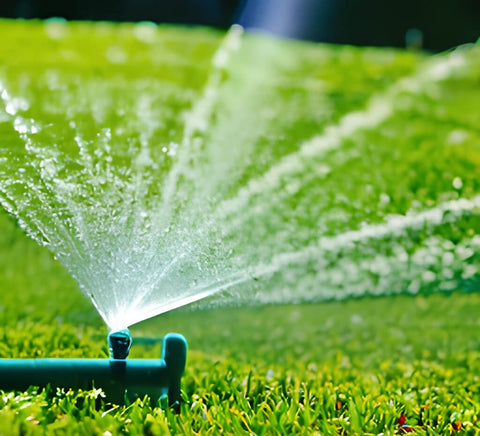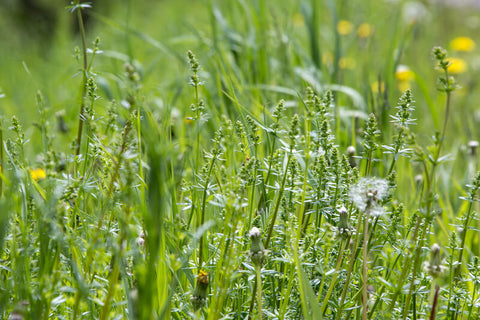Are you dreaming of relaxing in your backyard more instead of constantly tending to it? You're not alone! Maintaining a lush lawn can feel like a never-ending chore. But it doesn't have to be. In this article, I'll share practical strategies and innovative solutions to help you reclaim your weekends and enjoy a stunning outdoor space.
Design a Landscape That Works for You
The key to a low-maintenance lawn starts with smart planning.
- Embrace Native Plants: Native species thrive in your local climate, requiring less water, fertilizer, and fuss. They're naturally resistant to pests and diseases, making your life easier.
- Choose Perennial Power: Try planting perennials instead of annuals. Perennials come back year after year without needing to be replanted. These plants are tough and easy to take care of. They also don't require as much watering or pruning as short-lived plants. Some low-maintenance perennial options include Black-eyed Susan (Rudbeckia spp.), Coneflower (Echinacea spp.), and Sedum. Check with your local landscape suppliers to find out which is best for your region.
- Choose Low - Maintenance Grass: When choosing grass for your lawn, go for low maintenance varieties that need less mowing and watering and are suitable for your climate. Consider how well the grass can handle drought, shade, and diseases. For example, Zoysia grass grows slowly and can handle dry conditions.
- Mulch It Up: A thick layer of mulch in your flower beds suppresses weeds and helps the soil retain moisture, reducing the need for frequent watering.
Smart Watering Strategies

- Automate It: Automatic hose timers and smart irrigation systems take the guesswork out of watering, ensuring your plants get the moisture they need without overwatering.
- Use Soaker Hoses: These deliver water directly to the roots, minimizing evaporation and discouraging weed growth.
- Let It Rain: Install a rain sensor to pause your irrigation system when nature takes care of watering for you.
Winning the War on Weeds

Image Source: dreamstime.com
Want to make lawn care easier? Don't let weeds take over your yard! Let me give you some advice:
- Address any soil problems that may be promoting weed growth. Test your soil and make necessary amendments to create a healthier environment for your grass and plants.
- Prevent bare spots and patchy areas in your lawn, as these are breeding grounds for weeds. Fill them in with grass seed or convert them into flower beds to create a denser lawn.
- In shady areas where grass struggles, consider using shade-loving grasses or creating shade gardens with low-maintenance ground covers and ornamental plants. Trimming lower branches of trees can also reduce shade and encourage healthier grass growth.
- Use a pre-emergent weed control to stop weed seeds from sprouting. Preemergence herbicides create a barrier in the soil and reduce the need for constant weeding.
Preemergence herbicides prevent germinated weed seedlings from becoming established, either by inhibiting the growth of the root, the shoot, or both.
Source: weeds.ces.ncsu.edu
- Tackle weeding in small sections. Start with one area at a time, removing all the weeds before moving on. This makes the task less overwhelming and ensures thorough weed removal.
- Invest in the right tools for tap-rooted weeds, like a digging knife or ergonomic weeder. These tools make it easier to remove the entire root and prevent regrowth.
- Remember to weed when the soil is moist. After rain or watering, the soil is easier to work with, and the roots of the weeds come out more easily.
Mow Smarter, Not Harder: Efficient Mowing Patterns
Boost your mowing efficiency and save precious time with these strategic patterns:
- Straight Rows: Ideal for rectangular lawns, mowing in straight lines along the longest length minimizes turns and ensures an even cut. Simply move back and forth, overlapping slightly with each pass.
- Concentric Circles: Perfect for larger lawns or those with obstacles, begin at the outer edge and mow in gradually smaller circles towards the center. This reduces the need for sharp turns and simplifies navigation around trees or flower beds.
- Double Spiral: For maximum efficiency, start at the perimeter and mow in a spiral towards the center. Then, reverse the spiral, returning to the outer edge. This clever pattern minimizes the distance traveled and reduces wear and tear on your mower.
Experiment with these patterns to find the one that best suits your lawn's shape and size. You'll be amazed at how much time you can save while still achieving a beautifully manicured lawn.
Take Advantage of Edging Tools
Edging tools help define borders and prevent grass from invading other areas. Save time and effort with the lawn edgers.
- Manual edger. It's simple and effective. Just push the sharp blade into the ground for clean edges. Manual edgers are great for smaller yards and hands-on landscapers.
- Rotary edger. It is powered by a small engine and is perfect for larger areas. The spinning blade creates a defined edge and gives your lawn a professional finish.
- Electric edgers. They are lightweight and easy to handle. The rapid spinning blade cuts through grass and soil. The edger is ideal for homeowners with smaller yards.
- Edger attachments for walk-behind mowers. Connect it to your mower for enhanced efficiency. The mower attachment makes lawn care way easier.
Use a Mulching Mower
Mulching mowers are great because they have several benefits.
- They save you time and effort by cutting the grass and returning the clippings to the lawn as a natural fertilizer. This means you don't have to bag and dispose of the clippings.
- Mulching mowers help improve soil health by recycling nutrients and retaining moisture.
That deposits nutrients back into the soil, reducing fertilizing needs by as much as 30 percent.
Source: consumerreports.org
When choosing a mulching mower, consider your lawn size, terrain, and preferences. Look for one with adjustable cutting height settings for different grass lengths. Also, consider features like high-quality blades that finely shred the clippings for even distribution on the lawn. Don't forget to decide between electric or gas-powered options based on your needs and environmental concerns.
Lawns cover 20 million acres of residential land in the US, and gas lawnmowers account for 5% of the air pollution.
Source: learn.eartheasy.com
Lawn Low-Maintenance Checklist: Your Path to a Hassle-Free Yard
This checklist is adaptable to various regions across the United States. For the best results, research your local climate and specific plant recommendations.
Landscape Design:
Grass Selection:
Watering:
Weed Control:
Mowing:
Edging:
Additional Tips:
Regional Considerations:
Remember, this is a general checklist. Adjust it based on your local climate, soil type, and lawn care needs. Consult your local Cooperative Extension Service or a lawn care professional for personalized advice. |
Download our FREE Lawn Low - Maintenance Checklist
Download Lawn Low - Maintenance Checklist
Wrapping Up!
Reclaim your free time and enjoy a beautiful lawn with these simple yet effective strategies. Remember, a low-maintenance landscape doesn't have to be boring. With a little planning and the right tools, you can create a vibrant, thriving yard that's a joy to behold – not a chore to maintain.
Share your own lawn care hacks in the comments below! Let's create a community of lazy lawn enthusiasts who appreciate a beautiful yard without the backbreaking work.

